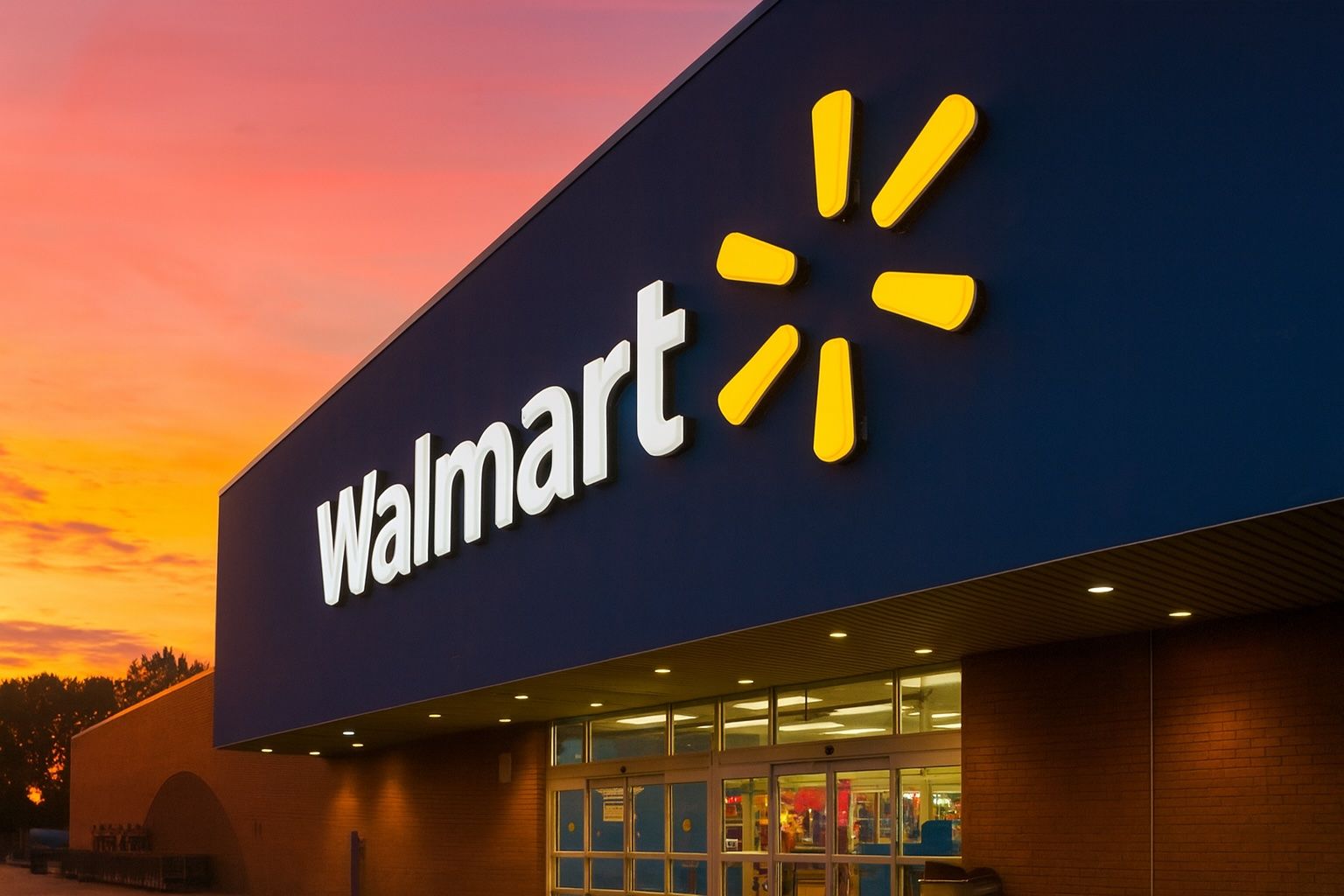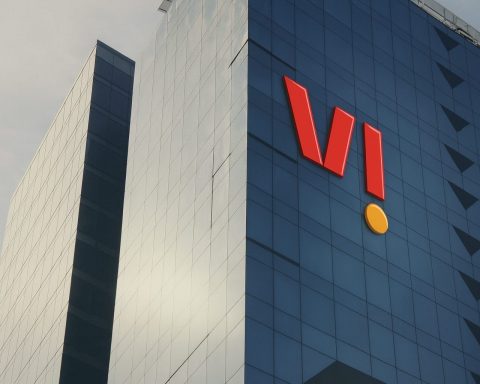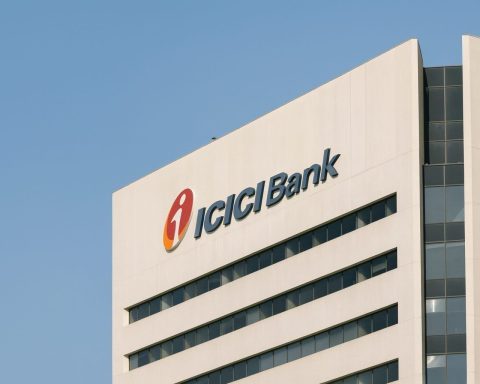- AI Partnership Drives Rally: On Oct 14, Walmart (NYSE: WMT) announced a new ChatGPT shopping integration (an “Instant Checkout” feature with OpenAI’s chatbot). This news sent WMT shares up roughly 3–5% intraday, closing around $107 on Oct 14 [1] [2] – a new 52-week and all-time high.
- Stock Performance: Walmart is up ~18.6% year-to-date, trading near the top of its 52-week range [3]. With the jump, its market cap is about $854 billion [4] – roughly 22% shy of a $1 trillion valuation [5].
- Strong Q2 Results: In Q2 FY2026 (quarter ended July 2025), Walmart reported $177.4 billion in revenue (+4.8% YoY) [6]. Growth was broad-based: U.S. same-store sales rose ~4.6%, Sam’s Club comps +5.9%, and U.S. e‑commerce surged ~26% [7]. High-margin businesses (online ads, memberships) grew sharply, helping offset margin pressure. Management raised full-year sales and EPS guidance on the results [8].
- Bullish Analyst Outlook: Wall Street remains largely bullish. About 30 of 31 analysts rate WMT a Buy or Strong Buy [9]. The consensus 12-month price target is around $112–115 (roughly +10% upside) [10] [11]. Firms like UBS (Michael Lasser) and TD Cowen have highlighted Walmart’s strong growth engines.
- Strategic Initiatives: Walmart is aggressively investing in technology and convenience. CEO Doug McMillon says the ChatGPT deal ushers in a “multimedia, personalized and contextual” shopping future [12]. The chain is also extending Sam’s Club store hours, deploying Google Wing delivery drones, and partnering with Symbotic on AI-robotic fulfillment centers [13] – moves analysts say position Walmart well in an increasingly digital retail landscape.
AI Shopping Integration Fuels Stock Rally
Walmart’s stock jumped on Oct. 14 as investors cheered its tie-up with OpenAI’s ChatGPT. Per Reuters, the deal lets customers shop directly within ChatGPT (using an “Instant Checkout” feature), and the news drove WMT shares up 5% to $107.21 by the close [14]. Market data show that rally lifted Walmart to an all-time high (Intraday ~$107–107.92) [15]. Analysts say this move signals a major shift toward AI-driven retail: UBS’s Michael Lasser noted the ChatGPT integration provides “incrementality and differentiation vs. the rest of retail” [16]. Even OpenAI’s Sam Altman praised the partnership as “one way AI will help people every day” by simplifying routine shopping [17]. CEO McMillon similarly framed the launch as a step toward a “native AI experience” for customers [18].
Finviz highlights that Walmart’s shares are normally steady – today’s ~3–5% spike (a typical session high) was significant [19]. Notably, WMT is now trading near its 52-week peak (around $106–107) [20], up ~19% since year-start. Financial commentators point out that this stock surge erased recent losses and places Walmart among the top Dow performers on the week. For context, MarketBeat reports the stock traded as high as $106.11 intraday on Oct. 14 vs. the prior close of $102.12 [21]. The swift market response underscores investor optimism that Walmart’s AI push will unlock new sales.
Solid Financials and Positive Guidance
Behind the rally are strong fundamentals. Walmart’s latest quarter (Q2 FY2026) beat expectations on the top line. Total revenues were $177.4 billion (up 4.8% YoY) [22], driven by robust in-store traffic (U.S. comps +4.6%) and booming online sales (U.S. e‑commerce +26%). Sam’s Club also grew fast (+5.9% comps) [23], while membership fee income jumped ~15% as Sam’s Club membership rolls (up 7.6% YoY) expanded [24]. High-margin areas powered these gains – global e-commerce rose ~25%, and Walmart’s advertising unit surged nearly +46% [25] – helping to offset rising costs. Management was upbeat: it raised full-year sales and EPS guidance after the quarter [26], reflecting confidence in Walmart’s growth engines.
Financial markets have taken note of Walmart’s consistency. Its valuation is high (forward P/E ~36× [27]), but analysts say it’s justified by above-trend growth. Roughly 40 analysts cover WMT, and all but one rate it a buy [28]. Consensus forecasts assume modest continued gains – roughly 3–4% annual sales growth and ~3% earnings growth for FY2026 [29]. MarketBeat notes Walmart has set Q3 EPS guidance at $0.580–0.600 and full-year FY2026 at $2.520–2.620 [30]. In short, most analysts see mid-single-digit revenue growth ahead.
Market Outlook: Cautious Optimism
Most experts view Walmart as a “moderate buy” or buy/hold. TS2’s analysis agrees Walmart is poised for steady, not explosive, gains. Its diverse engines – robust grocery/value sales, surging e-commerce, fast-growing ad and membership income – suggest ~3–5% annual revenue growth ahead [31]. The firm expects profit growth to be aided by higher-margin segments (ads and memberships) and by tight cost controls [32]. Continued market share gains in everyday essentials (groceries, consumables) could allow Walmart to modestly outpace the broader retail sector [33].
Analyst consensus targets imply roughly 10–13% upside from current prices. As TS2 notes, the average 12-month WMT target (~$112–115) is about 10% above the current stock level [34] [35]. (A few bullish forecasters have higher targets: Wolfe Research set a $129 price target this fall [36].) Overall, brokers are upbeat on Walmart’s outlook: Investing.com and TipRanks show 30–31 analysts with buy or strong-buy ratings [37] [38]. For example, TD Cowen recently called Walmart one of its top retail picks in the AI era, praising its “C-suite level commitment” to AI [39].
However, some caution remains. Walmart’s valuation is above its historical norm, and investors note that much of the positive news may already be priced in. TS2’s analysis observes that at the current high P/E, “the stock’s recent run-up and high P/E warrant some caution: any major disappointment (e.g. slower growth or higher tariffs) could be punished” [40]. Even so, Wall Street generally agrees: Walmart is seen as a core defensive retail holding, likely to deliver modest but reliable gains. As TS2 puts it, “most analysts expect mid-single-digit growth and see the stock as a buy” for long-term portfolios, even if near-term upside is limited [41].
Retail Sector Trends and Competition
Walmart’s moves come amid broader retail shifts. AI and omnichannel shopping are hot trends: Amazon is rolling out its own AI assistant (Rufus) and AI search tools, and even smaller rivals are testing chatbot checkouts. Experts warn Walmart must keep innovating to stay ahead. TS2 notes that while Walmart dominates groceries and value retail, competition is fierce: “Amazon and pure e-tailers continuously innovate on speed and selection; Costco’s membership model keeps it growing; and brick-and-mortar chains (Kroger, Dollar stores, etc.) fight for groceries” [42]. Each competitor has strengths – Costco’s loyal membership base and Amazon’s tech lead chief among them – so Walmart’s AI investments aim to defend and extend its edge.
On the consumer side, Walmart is often viewed as a bellwether. As investor Charles Sizemore observes, “Walmart essentially is middle America,” meaning its results reflect average U.S. consumer health [43]. In that light, Walmart’s steady sales growth (even as the broader economy shows mixed signals) is encouraging. CFO John Rainey recently emphasized that core customers remain “resilient and focused on value” despite inflation [44]. In other words, Walmart’s bargain-driven shoppers have so far held up, which bodes well for the retailer.
Headwinds: Tariffs and Inflation
Not all news is positive. A big lingering concern is trade tariffs and inflation, which could squeeze Walmart’s margins or dampen demand. Walmart’s leadership has repeatedly flagged this risk: in May 2025, CFO Rainey warned that higher tariffs would force price hikes for shoppers, saying Americans would see prices rise by summer if tariffs remained high [45]. Indeed, TS2 cites analysts noting the looming tariff “storm” – Trump’s proposed 100% tariffs on many Chinese imports – that could hit Walmart’s largely China-sourced merchandise [46]. McMillon has admitted the impact will be gradual but real, and the company is working to minimize it.
Still, many believe Walmart can weather this. Its sheer buying power and supply-chain scale give it more leeway to absorb costs than most retailers. Analysts at RBC Capital (for example) point to Walmart’s pricing power and growing ad/membership income as offsets to tariff pain [47] [48]. In short, while tariffs may slowly trickle into customer prices, Walmart’s diversified business helps cushion the blow.
Outlook and Forecast
Looking ahead, Wall Street analysts are divided between cautious optimism and profit-taking. The consensus is that Walmart will grow in mid-single digits annually, with Q4/FY2026 guidance around $2.52–2.62 EPS [49]. That implies incremental stock upside unless new catalysts emerge. TS2 concludes that Walmart is likely to remain a core retail name – still a buy for long-term investors, thanks to its strong fundamentals and shareholder-friendly policies (steady dividends, prudent investment) [50]. At the same time, valuations suggest traders shouldn’t expect fireworks: the average target only modestly exceeds current levels [51].
In summary, Walmart’s Oct 2025 news cycle has been very positive. The ChatGPT partnership has injected fresh excitement into the stock, and solid earnings give the rally a firm foundation. Experts say the AI initiative could meaningfully differentiate Walmart in the coming years [52], potentially boosting convenience and loyalty. But they also caution that competition and macro pressures (tariffs, consumer spending) will remain key variables. For now, Walmart’s outlook blends innovation and caution: industry observers generally call it a moderate buy with steady growth ahead, even as they remind readers that the stock’s run-up leaves less room for surprises [53] [54].
Sources: Authoritative financial and tech media, including Reuters, MarketBeat, Investing.com and TechStock² (TS2) analysis reports [55] [56] [57] [58].
References
1. www.reuters.com, 2. finviz.com, 3. finviz.com, 4. www.investing.com, 5. ts2.tech, 6. ts2.tech, 7. ts2.tech, 8. ts2.tech, 9. ts2.tech, 10. ts2.tech, 11. ts2.tech, 12. markets.financialcontent.com, 13. ts2.tech, 14. www.reuters.com, 15. www.investing.com, 16. markets.financialcontent.com, 17. ts2.tech, 18. markets.financialcontent.com, 19. finviz.com, 20. finviz.com, 21. www.marketbeat.com, 22. ts2.tech, 23. ts2.tech, 24. ts2.tech, 25. ts2.tech, 26. ts2.tech, 27. ts2.tech, 28. ts2.tech, 29. ts2.tech, 30. www.marketbeat.com, 31. ts2.tech, 32. ts2.tech, 33. ts2.tech, 34. ts2.tech, 35. ts2.tech, 36. www.marketbeat.com, 37. ts2.tech, 38. www.investing.com, 39. ts2.tech, 40. ts2.tech, 41. ts2.tech, 42. ts2.tech, 43. ts2.tech, 44. ts2.tech, 45. www.reuters.com, 46. ts2.tech, 47. www.investing.com, 48. www.investing.com, 49. www.marketbeat.com, 50. ts2.tech, 51. ts2.tech, 52. markets.financialcontent.com, 53. ts2.tech, 54. ts2.tech, 55. www.reuters.com, 56. ts2.tech, 57. markets.financialcontent.com, 58. ts2.tech







